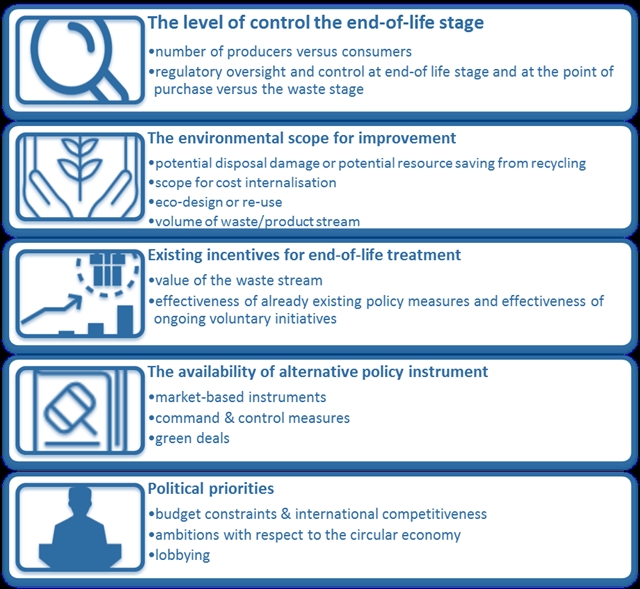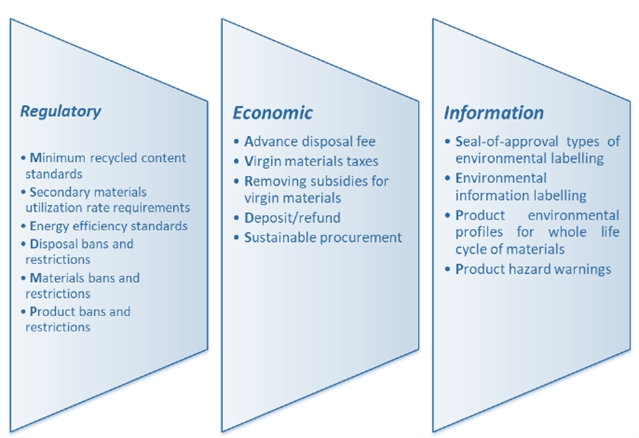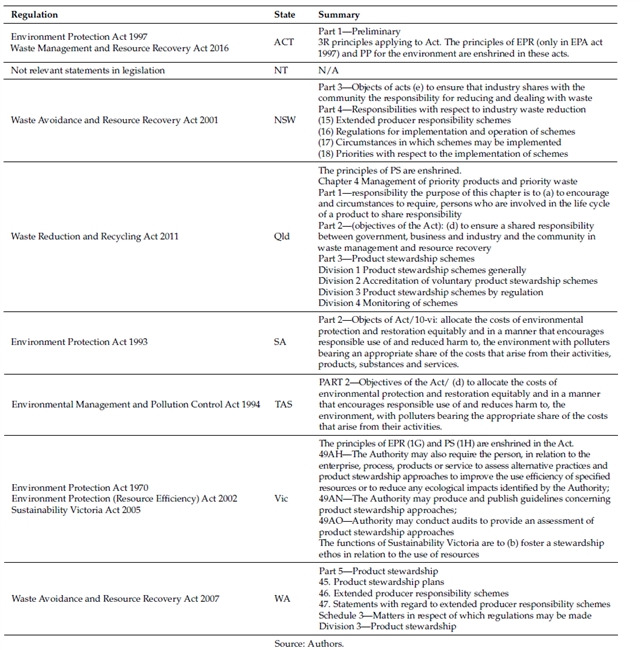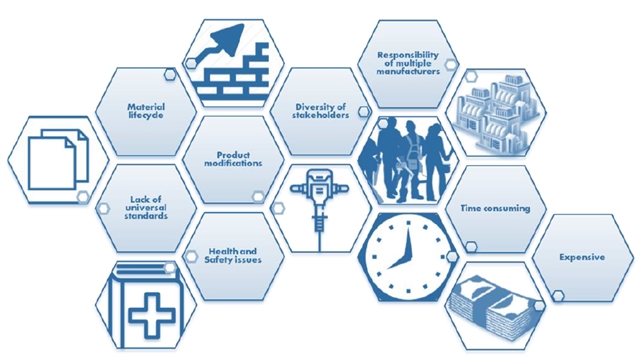|
|
|
|
|
澳大利亚建筑行业中废弃物管理的生产者延伸责任制 (epr) | mdpi sustainability |
|
|
论文标题:extended producer responsibility in the australian construction industry
期刊:
作者:salman shooshtarian et al.
发表时间:11 january 2021
doi:
微信链接:
期刊链接:
原文作者简介

dr. salman shooshtarian
rmit university, australia
salman shooshtarian博士是环境可持续性、城市生态系统和建筑可持续性领域的活跃研究者,现任墨尔本皇家理工大学 (rmit university) 项目管理系讲师、研究员,澳大利亚废物管理和资源回收协会 (wmraa) 维多利亚州废物教育工作者工作组成员,国际城市气候协会 (iauc) 和国际能源与建筑环境协会 (isebe) 成员。
salman shooshtarian博士的研究领域主要集中在室外热舒适性、城市绿化、建筑环境可持续性评估以及建筑和拆除废物管理。他在城市景观工程设计和执行实证研究项目 (定量和定性) 方面具有丰富的经验,并且在多个国家和国际研究项目中与不同的研究团队建立了合作关系。
引言
建筑废物管理已经成为许多国家建设中优先考虑的问题之一。全面有效的建筑废物管理系统应当包括三个方面:鼓励 (加强教育,建立绿色评级系统等)、执法 (征收费用,罚款等)、预防 (预估废料,明确责任) [1–5]。通过上述三种手段,制定相对平衡的废物管理计划,为各方利益相关者创造相对公平的竞争环境。
随着新冠疫情的爆发,政府意识到常规政策手段已经无法全面应对新兴问题 [6]。澳大利亚墨尔本皇家理工大学的salman shooshtarian博士等人,在上发表的"extended producer responsibility in the australian construction industry"一文中介绍了一种能在建筑业中广泛促进循环经济的政策:生产者延伸责任制 (epr)。epr已经被证实具有成功的市场基础,其明确了在生产活动的整个生命周期中的材料供应链责任,包括设计规划、生产制造、回收和最终处置 [7,8]。
epr与传统的强制性政策的主要区别在于,它是市场化的激励措施,鼓励生产者将环境因素纳入考虑范围。本文对epr的研究主要集中在三方面:
• 回顾建筑拆迁废物的epr管理实例和类似政策的实施;
• 确定制订epr及其他类似政策在澳大利亚的地位;
• 探索在澳大利亚建筑业实施epr及类似政策将面临的挑战。
epr及类似政策的应用实例
由于epr涉及到广泛的利益相关者和复杂的实施过程,因此政策的制订和实施并非易事。maarten dubois,diana de graaf和joachim thieren提出了开发和评估epr政策的五个标准 (图1)。

图1. 制订epr政策的五项建议标准。来源:maarten dubois, diana de graaf and joachim thieren [9]。
angela acree guggemos和arpad horvath基于beverley thorpe and iza kruszewska [10] 的模型提出了一个政策框架,由三种类型的政策手段构成:监管、经济和基于信息的手段 (图2)。

图2. 促进epr实施的三种政策手段。资料来源:angela acree guggemos and arpad horvath [11]。
此外还有一些研究探索了如何最大限度地提高epr绩效和废物管理的充分性。yamini gupt和samraj sahay [12] 对26个发达国家和发展中国家的案例进行了比较分析,研究促进epr开发和实施的主要因素。其结果显示,生产者的经济责任、分类收集和回收机构为epr政策的成功实施作出了主要贡献。
epr政策制订在澳大利亚的地位
epr政策在澳大利亚的废物管理目标中发挥着重要作用。根据国家废品政策,澳大利亚的国家方针是政府负责领导产品管理。1997年南澳州政府为管理废弃饮料瓶而设立的集装箱存放计划是澳大利亚的首个epr立法。图3列举了澳大利亚各州实行的epr及类似政策。
目前环境与能源部正在推进一项产生废品 (以下简称产品) 管理初步法案,该法案受国家废物政策指导,为有效管理产品的环境、健康和安全影响规定了框架,尤其着重于对产品处置相关影响的管理。该法案通过三种管理模式运作:自愿、共同监管和强制性。

图3. 澳大利亚不同州支持epr和类似计划的监管框架。
epr及类似政策实施所面临的挑战
并不是所有的epr政策手段都能在建筑拆迁废料处理中发挥同等的积极作用。在建筑行业有效开发和实施epr,主要面临着如下挑战 (图4):

图4. 在建筑拆迁废料流通管理中实施epr政策所面临的主要挑战。
1. 时间和成本
受执行过程局限,epr政策的执行可能提高项目成本。另外,回收再利用的废料通常比传统材料昂贵,从而降低了预期利润。由于需要花时间对混合的建筑废料进行分类拣选,以及涉及数据收集和公开报告等繁琐步骤,epr也可能增加各方的时间成本。
2. 建筑材料的生命周期
建筑材料的生命周期通常可达十年以上,这大大影响了材料的可回收性和可重复使用性。但通过在设计、计划、采购和施工阶段的科学规划,可以事先减少建筑废料的产生。
3. 广泛的利益相关方
传统上,设计和施工存在脱节,阻碍了epr过程的统一实施。一项对美国两个案例进行了研究的项目报告 [13] 称,若要加强epr发挥的管理作用,可以使设计方对建筑材料的可回收性拥有更多控制权。由于建筑活动的复杂性,可以使主要承包商对分包商进行跟踪监督,确保他们完全遵守epr的准则。
4. 在不同的监管框架中执行epr
当前,澳大利亚尚无适用于建筑材料的全国通用标准,一项epr实施过程若跨区域进行,则还可能受制于多个监管框架。若制造商在未推广epr的市场环境中执行epr政策,则可能对绩效造成不利影响。
5. 生产者责任的分配
由于承包商通常从多家供应商处采购大宗材料,加上所需材料因项目而异,且许多材料没有明显的制造商标识,因此在对材料评估时识别供应商困难较大,从而导致废物处理责任难以分配。
6. 改造、维护和翻新
在建筑改造或维护翻新期间也可能出现epr相关问题。改造工作很少由原始建设体系结构进行,也就是说可能涉及新的承包商,从而为epr监管和实行带来复杂性。
7. 卫生、健康和安全问题
拆建废物中的污染物是一个普遍的问题。此外,废料的收集和分类可能带来施工现场的安全隐患。因此,必须采取更高级的安全和卫生措施,从而进一步增加成本,阻碍epr在建设项目中的有效实施。
结论
本文作者提出如下建议,可以帮助决策者制订废物管理政策并帮助epr利益相关方建立可持续发展的意识:首先,目前包含逆向物流的供应链成本比传统供应链高出几倍 [14–16],通过开发更高效的供应链可以降低此方面成本。其次需要激励制造商在设计阶段考虑到拆解与回收的问题,与建设者共同参与epr计划。另外,需要在合作系统中传达和协调每个利益相关方的责任,将废品管理的责任方与污染者等同起来。第四,加强健康与安全风险管理,降低作业安全风险。最后,使用bim等新技术手段加强对产品的归档登记工作。
原文出自 期刊
shooshtarian, s.; maqsood, t.; wong, p.s.; khalfan, m.; yang, r.j. extended producer responsibility in the australian construction industry. sustainability 2021, 13, 620.
参考文献
1. shooshtarian, s.; khalfan, m.; maqsood, t.; wong, s.p.p. and yang, r.j. market development for construction and demolition waste stream in australia. j. constr. eng. manag. innov. 2020, 3, 220–231.
2. shooshtarian, s.; maqsood, t.; wong, s.p.p.; yang, j.r. and khalfan, m. review of waste strategy documents in australia: analysis of strategies for construction and demolition waste. int. j. environ. technol. manag. 2020, 23, 1–21.
3.caldera, s.; ryley, t. and zatyko, n. enablers and barriers for creating a marketplace for construction and demolition waste: a systematic literature review. sustainability 2020, 12, 9931.
4. shooshtarian, s.; maqsood, t.; khalfan, m.; yang, r.j. and wong, s.p.p. landfill levy imposition on construction and demolition waste: australian stakeholders perceptions. sustainability 2020, 12, 4496.
5. shooshtarian, s.; maqsood, t.; wong, p.s.p.; khalfan, m. and yang, r.j. green construction and construction and demolition waste management in australia. in proceeding of 43rd aubea conference: built to thrive: creating buildings and cities that support individual well-being and community prosperity, noosa, australia, 6–8 novomber 2019.
6. rahman, s.m.; kim, j. and laratte, b. disruption in circularity? impact analysis of covid-19 on ship recycling using weibull tonnage estimation and scenario analysis method. resour. conserv. recycl. 2020, 164, 105139.
7. tam, v.w.-y. and lu, w. construction waste management profiles, practices, and performance: a cross-jurisdictional analysis in four countries. sustainability 2016, 8, 190.
8. oecd. extended producer responsibility: updated guidance for efficient waste management; organisation for economic cooperation and development; oecd publishing: paris, france, 2016.
9. dubois, m.; de graaf, d.; and thieren, j. exploration of the role of extended producer responsibility for the circular economy in the netherlands; ey: london, uk, 2016.
10. thorpe, b. and kruszewska, i. strategies to promote clean production: extended producer responsibility. clean production action.[online]. institute for sustainable futures, uts appendix a (1999). available online: (accessed on 1 april 2018).
11. acree, g.a. and horvath, a. strategies of extended producer responsibility for buildings. j. infrastruct. syst. 2003, 9, 65–74.
12. gupt; y. and sahay, s. review of extended producer responsibility: a case study approach. waste manag. res. 2015, 33, 595–611.
13. srour, i.; chong, w.k.; zhang, f. sustainable recycling approach: an understanding of designers and contractors recycling responsibilities throughout the life cycle of buildings in two us cities. sustain. dev. 2012, 20, 350–360.
14. nagel, c.; nilsson, j. and boks, c. european end-of-life systems for electrical and electronic equipment. in proceedings of the first international symposium on environmentally conscious design and inverse manufacturing, tokyo, japan, 1–3 february 1999.
15. klausner, m. and hendrickson, c.t. reverse-logistics strategy for product take-back. interfaces 2000, 30, 156–165.
16. khor, k.s.; udin, z.m.; ramayah, t.; hazen, b.t. reverse logistics in malaysia: the contingent role of institutional pressure. int. j. prod. econ. 2016, 175, 96–108.


特别声明:本文转载仅仅是出于传播信息的需要,并不意味着代表本网站观点或证实其内容的真实性;如其他媒体、网站或个人从本网站转载使用,须保留本网站注明的“来源”,并自负yabo亚博88的版权等法律责任;作者如果不希望被转载或者联系转载稿费等事宜,请与我们接洽。